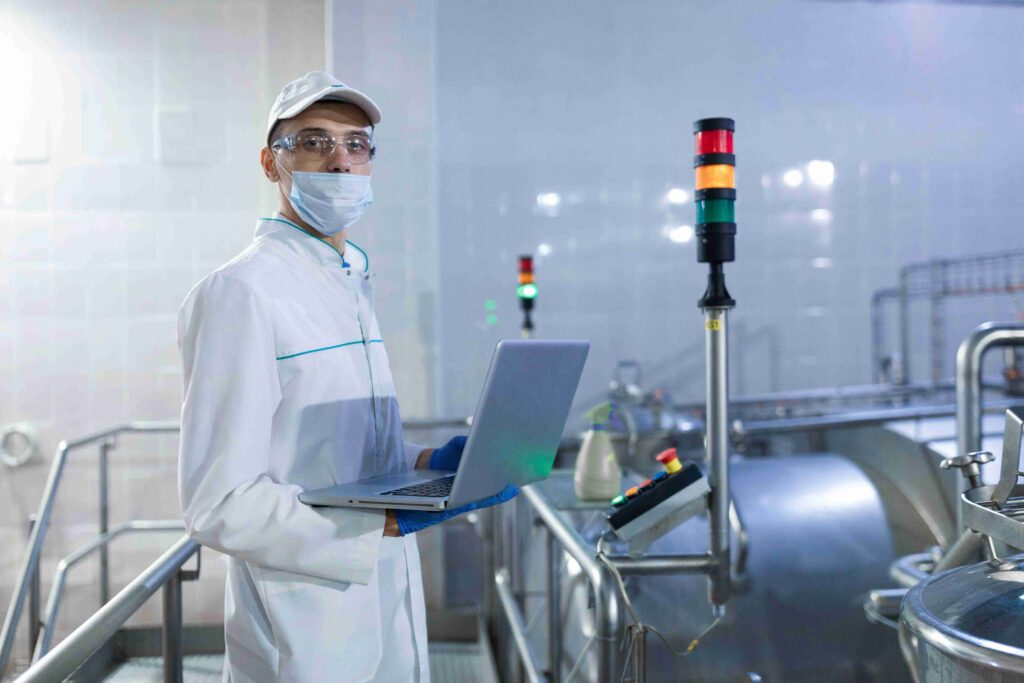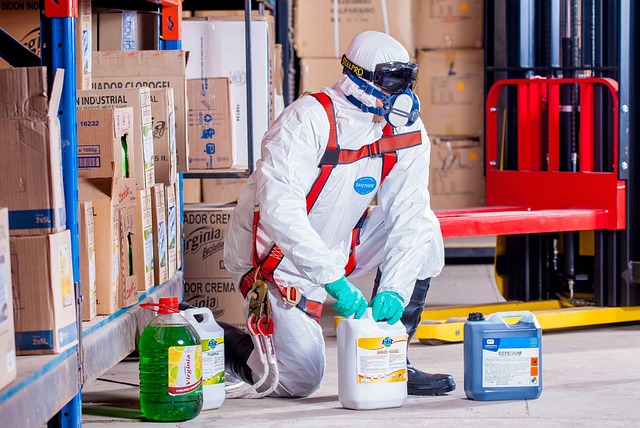Introduction
Chemical manufacturing is a cornerstone of modern industry, providing essential components for everything from pharmaceuticals to electronics. The sector is integral to numerous global supply chains, contributing significantly to economic growth. However, the industry also presents significant safety challenges.
According to the U.S. Bureau of Labor Statistics, the chemical manufacturing sector reported approximately 2.8 incidents per 100 full-time workers in 2023, highlighting the inherent risks associated with this industry. The complex processes involved in chemical manufacturing, coupled with the hazardous nature of many chemicals, necessitate stringent safety measures to protect workers and communities.
Ensuring safety in chemical manufacturing is not only a regulatory requirement but also a moral imperative. The repercussions of neglecting safety protocols can be devastating, leading to loss of life, environmental damage, and substantial economic costs. For instance, the global chemical industry faced losses exceeding $30 billion due to accidents and non-compliance in the past decade.
Why is Safety Important?
Safety in chemical manufacturing is critical to prevent accidents that can have far-reaching consequences. The West Fertilizer Company explosion in 2013, which killed 15 people and injured over 160, was caused by the improper storage of ammonium nitrate, highlighting the importance of proper chemical storage and handling practices. Similarly, the 2015 Tianjin explosions in China resulted in 173 fatalities and significant environmental damage due to the mishandling and improper storage of hazardous chemicals like sodium cyanide. These incidents underscore the dire need for stringent safety measures to prevent such catastrophes.
Moreover, the 2019 fire at the Lubrizol chemical plant in Rouen, France, released hazardous chemicals into the atmosphere, affecting thousands of residents and highlighting the critical importance of fire prevention and emergency response strategies. These real-world examples illustrate the potentially catastrophic consequences of safety lapses in chemical manufacturing. Ensuring safety is essential not only to protect lives but also to safeguard the environment and prevent economic losses. Implementing best practices in safety management can help mitigate these risks and create a safer working environment for all involved. Hence, we will now explore various safety practices to keep in mind during chemical manufacturing.

1. Implementing Robust Safety Management Systems
A robust Safety Management System (SMS) is the foundation of safe chemical manufacturing. An effective SMS includes hazard identification, risk assessment, and the implementation of control measures.
Key Elements of a Safety Management System:
Hazard Identification and Risk Assessment (HIRA)
Regularly identifying and assessing potential hazards can prevent accidents. According to the Occupational Safety and Health Administration (OSHA), a well-implemented HIRA can reduce workplace injuries by up to 25%.
Standard Operating Procedures (SOPs)
Clear, detailed SOPs ensure consistency in operations and safety practices. SOPs should be regularly reviewed and updated to reflect changes in processes or regulations.
Incident Investigation and Reporting
Encouraging a culture of reporting near-misses and incidents helps identify root causes and prevent recurrence. The Chemical Safety Board (CSB) reports that thorough incident investigations can reduce the likelihood of repeat incidents by 40%.
2. Training and Education
Continuous training and education are critical in maintaining a safety-conscious workforce. Employees should be well-versed in handling chemicals, emergency procedures, and the use of personal protective equipment (PPE).
Effective Training Programs:
Initial Training Program
New employees should receive comprehensive training on safety protocols, emergency procedures, and the specific hazards associated with their roles.
Regular Refresher Courses
Ongoing training ensures that employees remain up-to-date with the latest safety practices and regulatory requirements. Studies show that regular refresher courses can improve safety compliance by 30%.
Specialised Training
Certain chemicals or processes may require specialized training. For example, handling highly reactive chemicals demands advanced knowledge and skills.

3. Personal Protective Equipment (PPE)
Proper use of PPE is crucial in protecting workers from chemical hazards. The selection, maintenance, and correct usage of PPE can significantly reduce the risk of injuries.
Types of Personal Protective Equipment:
Respirators
Protect against inhalation of hazardous substances. The National Institute for Occupational Safety and Health (NIOSH) emphasizes that proper fit testing and training on respirator use can reduce exposure to airborne hazards by 90%.
Gloves and Protective Clothing
Essential for preventing skin contact with harmful chemicals. Material selection should be based on the type of chemical exposure.
Eye and Face Protection
Safety goggles and face shields protect against splashes and flying particles.
4. Engineering Controls
Engineering controls are physical modifications to equipment or processes that reduce or eliminate hazards. These controls are often more reliable and effective than administrative controls or PPE.
Examples of Engineering Controls:
Ventilation Systems
Proper ventilation, including fume hoods and exhaust systems, can significantly reduce the concentration of airborne contaminants.
Containment and Isolation
Using closed systems or isolating hazardous processes can prevent exposure. The European Agency for Safety and Health at Work (EU-OSHA) reports that effective containment can reduce exposure to hazardous chemicals by 73%.
Automated Systems
Automation can minimize human exposure to hazardous processes. For instance, automated mixing and transferring of chemicals can reduce the risk of spills and accidental releases.
5. Emergency Preparedness and Response
Preparing for emergencies is crucial in mitigating the impact of chemical accidents. A well-developed emergency response plan can save lives and minimize damage.
Key Components of Emergency Preparedness:
Emergency Response Plans (ERPs)
Detailed plans outlining the steps to be taken in various emergency scenarios, including chemical spills, fires, and explosions.
Regular Drills
Conducting regular emergency drills ensures that employees are familiar with procedures and can respond quickly and effectively.
Emergency Equipment
Readily accessible emergency equipment, such as eyewash stations, showers, and fire extinguishers, is essential. Regular maintenance and inspections of this equipment are crucial to ensure functionality during an emergency.
6. Regulatory Compliance
Compliance with local, national, and international regulations is not only a legal requirement but also a fundamental aspect of safety management.
Key Regulations:
OSHA Regulations
In the United States, OSHA sets and enforces standards to ensure safe and healthy working conditions. Compliance with OSHA regulations can significantly reduce workplace injuries and illnesses.
REACH (Registration, Evaluation, Authorisation, and Restriction of Chemicals)
In the European Union, REACH aims to protect human health and the environment from the risks posed by chemicals.
Globally Harmonized System of Classification and Labelling of Chemicals (GHS)
Internationally, GHS provides a standardized approach to classifying and communicating chemical hazards.
7. Case Studies and Real-World Incidents
Learning from past incidents can provide valuable insights into improving safety practices.
Case Study: Bhopal Gas Tragedy (1984)
One of the most devastating industrial accidents in history, the Bhopal disaster in India resulted in the release of methyl isocyanate gas, causing thousands of deaths and long-term health effects for the local population. This incident underscored the importance of stringent safety protocols, regular maintenance, and emergency preparedness.
Case Study: Texas City Refinery Explosion (2005)
An explosion at the BP refinery in Texas City, USA, killed 15 workers and injured over 170. The incident was attributed to a series of safety failures, including inadequate training, insufficient maintenance, and failure to follow established safety procedures. This tragedy highlighted the critical need for a robust safety culture and adherence to safety standards.
8. Leveraging Technology for Safety
Advancements in technology offer new opportunities to enhance safety in chemical manufacturing.
Technological Innovations:
Internet of Things (IoT)
IoT devices can monitor equipment conditions in real time, providing early warnings of potential failures or hazardous conditions. Predictive maintenance using IoT can reduce equipment-related accidents by 20%.
Wearable Technology
Wearable devices, such as smart helmets and vests, can monitor workers’ vital signs and environmental conditions, alerting them to potential hazards.
Augmented Reality (AR)
AR can be used for training purposes, allowing workers to practice handling hazardous situations in a virtual environment.
9. Fostering a Safety Culture
A strong safety culture is essential for the successful implementation of safety practices. Leadership commitment, employee involvement, and continuous improvement are key components of a safety culture.
Building a Safety Culture:
Leadership Commitment
Leaders must demonstrate a commitment to safety through their actions and decisions. This includes allocating resources for safety initiatives and actively participating in safety programs.
Employee Involvement
Encouraging employees to take an active role in safety can lead to better identification of hazards and more effective safety solutions. This can be achieved through safety committees, suggestion programs, and regular safety meetings.
Continuous Improvement
Safety practices should be continuously evaluated and improved based on feedback, incident investigations, and advancements in technology and best practices.
10. Environmental Considerations
Safety in chemical manufacturing extends beyond protecting workers to include safeguarding the environment. Implementing environmentally sustainable practices can reduce the risk of chemical releases and environmental contamination.
Environmental Best Practices:
Waste Management
Proper handling and disposal of chemical waste are essential to prevent environmental contamination. This includes following regulatory guidelines and using environmentally friendly disposal methods.
Pollution Prevention
Implementing processes and technologies that reduce emissions and effluents can minimize the environmental impact. This may involve using less hazardous materials, recycling, and energy-efficient practices.
Sustainability Initiatives
Adopting sustainable practices, such as green chemistry and circular economy principles, can enhance both safety and environmental performance.
Conclusion
Ensuring safety in chemical manufacturing requires a comprehensive and proactive approach. By implementing robust safety management systems, companies can identify and mitigate potential hazards before they lead to incidents. Continuous training and education for employees ensure that everyone is well-versed in handling chemicals safely and responding effectively to emergencies. The proper use of personal protective equipment, combined with engineering controls, can significantly reduce the risk of exposure to hazardous substances.
Moreover, fostering a strong safety culture within an organization is essential. Leadership commitment, employee involvement, and a continuous improvement mindset help create an environment where safety is prioritized. Leveraging technological advancements, such as IoT and augmented reality, can further enhance safety protocols and provide real-time monitoring and training solutions. Finally, adhering to regulatory compliance and learning from past incidents ensure that best practices are continually updated and implemented.
In conclusion, safety in chemical manufacturing is not just about compliance with regulations; it is about creating a culture that prioritizes the well-being of workers, the community, and the environment. By adopting best practices and continually striving for improvement, companies can protect their most valuable assets— their people— while maintaining operational efficiency and minimizing risks. Investing in safety is a strategic decision that can prevent costly accidents, enhance the company’s reputation, and contribute to long-term success.
To know more about custom manufacturing, feel free to reach out to us by clicking here!













